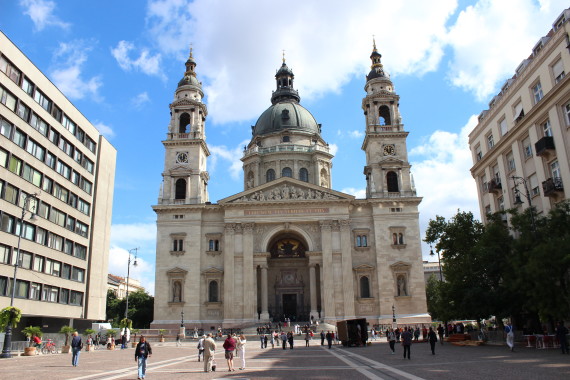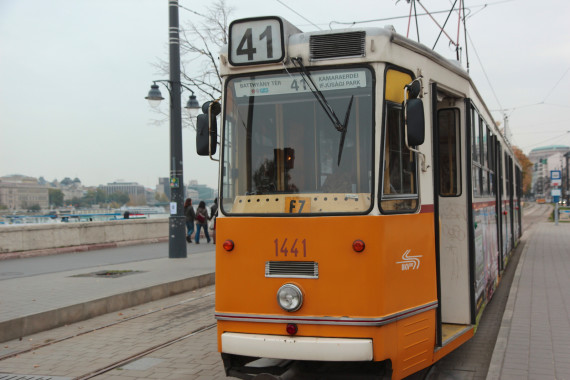Like us on Facebook
www.familytc.com
Book your vacation through Family Travel Concierge info@familytc.com or 860-830-4009
This article is shared by our partners Context Travel.
 A single ticket costs HUF 350, or a
short trip ticket (max. 3 stops) costs HUF 300. A block of 10 single
tickets costs HUF 3000. The 24 hour travel card costs HUF 1650 (valid 24
hours) or you can also buy a travelcard for use by up to five people
travelling together for HUF 3300. For full information see the BVK website (in English).
A single ticket costs HUF 350, or a
short trip ticket (max. 3 stops) costs HUF 300. A block of 10 single
tickets costs HUF 3000. The 24 hour travel card costs HUF 1650 (valid 24
hours) or you can also buy a travelcard for use by up to five people
travelling together for HUF 3300. For full information see the BVK website (in English).
The cog wheel railway, chairlift and river boat, are all operated by the BKV and standard tickets are valid for travel on these services. The funicular that takes you up Buda Castle has its own fares (HUF 840 single and HUF 1450 return).
Once you’ve bought a ticket, you must validate it by getting it stamped in one of the machines on the platform – if you don’t, you are technically travelling illegally and could be subject to an on-the-spot fine of HUF 10,000 (plain clothed inspectors travel the lines making impromptu checks).
Tipping & taxis
Be aware of unlicensed taxis in Budapest. Phone for a cab rather than hailing one off the street (or ask your waiter or concierge to do so on your behalf), or pick one up at a rank marked “taxi állomás”. Real taxis are usually identifiable by their livery, which advertises the taxi company and its phone number etc. A 10% tip is customary in restaurants, cafes, taxis and other service industries.
Getting to and from the airport
Between 4am and 11pm, the bus number 200E runs between Terminal 2 of Budapest airport and Kőbánya-Kispest metro station, where you can pick up the M3 to take you into the city centre. The 200E bus also takes you to nearby Ferihegy train station, from where you can pick up very regular train services to Nyugati station. The total journey time is around one hour. Tickets for public transport cost HUF 320 and are available during the daytime at the airport, from the post office, the newsagents (Relay) and from ticket machines. It is also possible to purchase a ticket from the bus driver for HUF 400. There is a special discounted ticket price for the bus of HUF 260 when bought in conjunction with a train ticket.
For a more direct option, there’s the Minibus Shuttle service, which takes you door-to-door, sharing the vehicle with others who have a similar destination. The minibuses serve every terminal (main entrance), run 24 hours a day, and prices start from HUF 3200 for journeys between the airport and the city centre.
Most hotels also offer to arrange shuttle pickups for their guests if given at least 24 hours notice.
Weather and climate
Budapest’s weather is surprisingly warm in summer; regularly in the high 20s and sometimes even topping 30°C (86 °F) in June, July and August. September to October is generally mild — during this time, pack a jacket, scarf and a hat, but nothing too heavy. November through February is by far the harshest time, weather-wise, with regular snow, ice and temperatures plummeting to -10°C (14 °F). A hardy winter jacket, boots, hat, gloves and thick woolen scarf are highly recommended. On the plus side, there’s plenty of outdoor fun to be had at the pretty Christmas Markets.
www.familytc.com
Book your vacation through Family Travel Concierge info@familytc.com or 860-830-4009
This article is shared by our partners Context Travel.

Budapest’s
divided landscape is a product predominantly of its ecology. Split in
two by the mighty Danube, Buda on the western side is small and hilly,
while over the river, Pest is
supine and sprawling to twice the size. Equipped with a history it
wears on its sleeve, the city tells an architectural story from the
middle ages to the present, with a post-communist glow that looks firmly
to the future. Here are our tips on how to handle the Hungarian
capital.
Public transport
Traffic can be bad in Budapest so it’s often best to take the tram or metro to avoid delays that can be common in buses and even taxis. There’s also a noticeable – almost distracting – level of air pollution in the city, especially during the warmer months, so it’s best to stay off the road where possible so as not to experience – or contribute to – this issue. The city is not enormous so walking can be a good way to get around. Alternatively, tram lines number 2 (from Pest riverfront), 4 and 6 (from Nagykorut) cover most of the inner city area. Having only four lines (M1, M2, M3 and M4), Budapest’s metro map is mercifully easy to navigate and another good way to get around town.
Traffic can be bad in Budapest so it’s often best to take the tram or metro to avoid delays that can be common in buses and even taxis. There’s also a noticeable – almost distracting – level of air pollution in the city, especially during the warmer months, so it’s best to stay off the road where possible so as not to experience – or contribute to – this issue. The city is not enormous so walking can be a good way to get around. Alternatively, tram lines number 2 (from Pest riverfront), 4 and 6 (from Nagykorut) cover most of the inner city area. Having only four lines (M1, M2, M3 and M4), Budapest’s metro map is mercifully easy to navigate and another good way to get around town.

The cog wheel railway, chairlift and river boat, are all operated by the BKV and standard tickets are valid for travel on these services. The funicular that takes you up Buda Castle has its own fares (HUF 840 single and HUF 1450 return).
Once you’ve bought a ticket, you must validate it by getting it stamped in one of the machines on the platform – if you don’t, you are technically travelling illegally and could be subject to an on-the-spot fine of HUF 10,000 (plain clothed inspectors travel the lines making impromptu checks).
Tipping & taxis
Be aware of unlicensed taxis in Budapest. Phone for a cab rather than hailing one off the street (or ask your waiter or concierge to do so on your behalf), or pick one up at a rank marked “taxi állomás”. Real taxis are usually identifiable by their livery, which advertises the taxi company and its phone number etc. A 10% tip is customary in restaurants, cafes, taxis and other service industries.
Getting to and from the airport
Between 4am and 11pm, the bus number 200E runs between Terminal 2 of Budapest airport and Kőbánya-Kispest metro station, where you can pick up the M3 to take you into the city centre. The 200E bus also takes you to nearby Ferihegy train station, from where you can pick up very regular train services to Nyugati station. The total journey time is around one hour. Tickets for public transport cost HUF 320 and are available during the daytime at the airport, from the post office, the newsagents (Relay) and from ticket machines. It is also possible to purchase a ticket from the bus driver for HUF 400. There is a special discounted ticket price for the bus of HUF 260 when bought in conjunction with a train ticket.
For a more direct option, there’s the Minibus Shuttle service, which takes you door-to-door, sharing the vehicle with others who have a similar destination. The minibuses serve every terminal (main entrance), run 24 hours a day, and prices start from HUF 3200 for journeys between the airport and the city centre.
Most hotels also offer to arrange shuttle pickups for their guests if given at least 24 hours notice.
Weather and climate
Budapest’s weather is surprisingly warm in summer; regularly in the high 20s and sometimes even topping 30°C (86 °F) in June, July and August. September to October is generally mild — during this time, pack a jacket, scarf and a hat, but nothing too heavy. November through February is by far the harshest time, weather-wise, with regular snow, ice and temperatures plummeting to -10°C (14 °F). A hardy winter jacket, boots, hat, gloves and thick woolen scarf are highly recommended. On the plus side, there’s plenty of outdoor fun to be had at the pretty Christmas Markets.
No comments:
Post a Comment